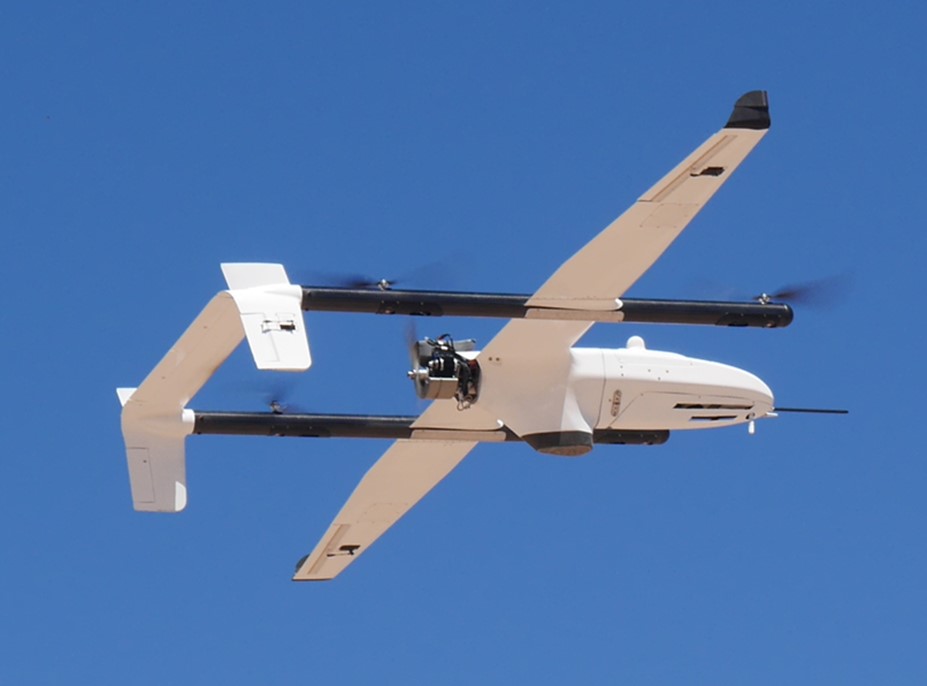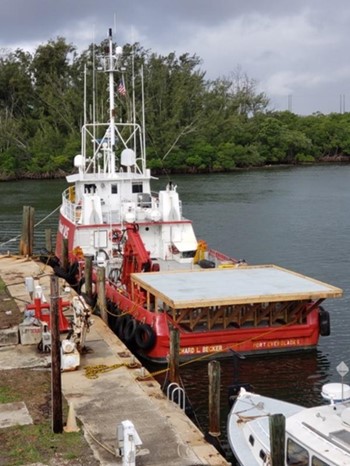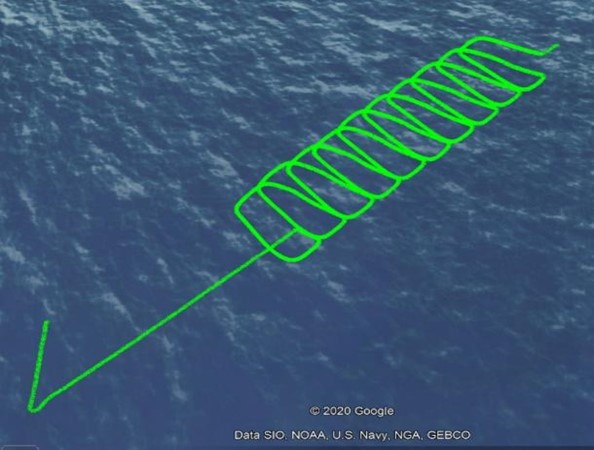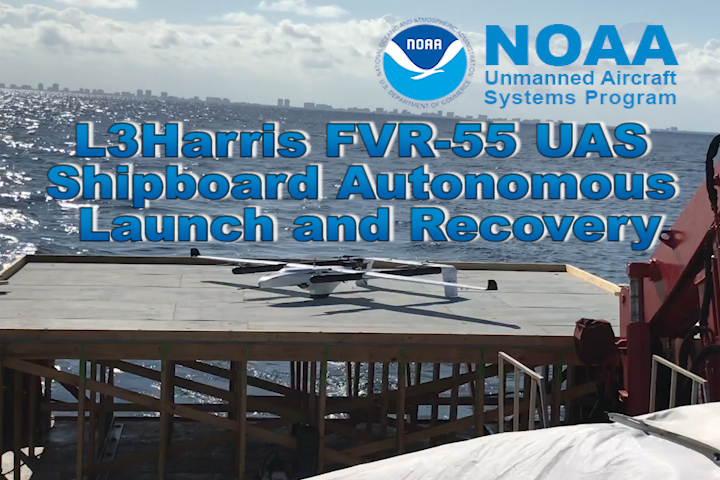ARTICLE AND FIGURES PROVIDED BY KENNETH VIERRA
In 2018, L3Harris was awarded a Phase II NOAA SBIR for the development of the Fixed Wing Vertical Takeoff and Landing (VTOL) Rotator (FVR-55) (Figure 1). Note that prior to acquisition by L3Harris, the UAS was named Latitude Engineering HQ-55. Dr. Patricia Quinn (PMEL) served as the technical point of contact (TPOC) for the SBIR. Test flights, including land autonomous take-offs and landings which were completed at the Florence Military Range near Tucson, AZ.

As a continuation of the research, the NOAA UAS Program Office awarded L3Harris a contract to support shipboard operations and scientific payload integration on the FVR-55. On February 17, 2020, flight tests were conducted on the M/V Richard L. Becker (Figure 2) off Fort Lauderdale, FL to demonstrate autonomous takeoff and recovery from a moving vessel at-sea. L3Harris completed all objectives and demonstrated fully autonomous flight using Hybrid Quadrotor (HQ) technology from a moving ship with limited deck space. The FVR-55 took off from the ship vertically, switched to fixed wing flight, and returned and landed vertically on the ship autonomously (no external pilot control inputs required).


L3Harris completed three flights with successful autonomous takeoffs and landings. The M/V Richard L. Becker was traveling approximately at 5 knots with winds estimated at 10 knots. The autonomous landing system placed the UAS between 1-3 feet from the takeoff position. Figure 3 shows the flight pattern during the first full flight in which the FVR-55 completed 10 orbits over the ship while the Becker was underway.


The UAS Program’s goal is to transition the FVR-55 UAS from research to operations on a NOAA vessel. Initially an OAR payload will be integrated and flown, but the capability for additional NOAA payloads is planned. Video 1 is video showing L3Harris successfully completing shipboard autonomous launch and recovery of the FVR-55.
The next phase of the project is to expand on these successes and complete payload integration and flight tests. The initial payloads to be tested have been developed by Pacific Marine Environmental Laboratory (PMEL) and NOAA ESRL Physical Sciences Division (PSD) through funding by the UAS Program.

